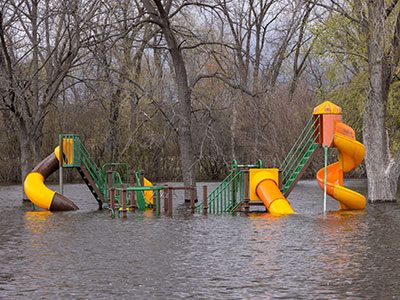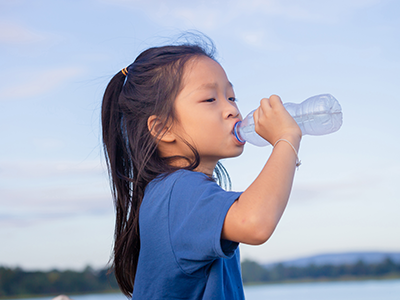As the mid-summer temperatures climb, we’re hearing more about heat-related illness and air quality codes. But what does a red air quality day really mean for you and your family?
Understanding air quality codes
The Air Quality Index (AQI) is an index for reporting daily air quality and what associated health effects might be a concern for your family. Children are considered a sensitive group so extra precautions should be taken.
There are five codes listed in a gradient, green being the safest and purple the most severe.
Air quality codes:
- Green – Good. No health effects are expected.
- Yellow – Moderate. Unusually sensitive people should consider limiting prolonged or heavy exertion.
- Orange – Unhealthy for Sensitive Groups. Active children and adults, and people with respiratory disease, such as asthma, should limit prolonged outdoor exertion.
- Red – Unhealthy. Active children and adults, and people with respiratory disease such as asthma, should avoid prolonged outdoor exertion; everyone else, especially children, should limit prolonged outdoor exertion.
- Purple – Very Unhealthy. Active children and adults, and people with respiratory disease such as asthma, should avoid all outdoor exertion; everyone else, especially children, should avoid prolonged outdoor exertion.
Other tips for staying cool
- Parents and children should wear hats and cool light clothing when going outside in the sun.
- Increase your water intake; before, during and after activity.
- If you experience a power outage, call your utility company.
While outside, if your child is becoming flush, experiencing muscle cramps or seems weak, these may be signs of a heat-related illness. Parents should familiarize themselves with the signs, symptoms and treatment of heat-related illnesses.
 https://riseandshine.childrensnational.org/wp-content/uploads/2025/09/parent-hugging-child-feature.jpg
300
400
Danielle Robbins
https://riseandshine.childrensnational.org/wp-content/uploads/2017/11/childrens_riseandshine_logo.jpg
Danielle Robbins2025-09-22 11:04:052025-09-22 11:04:05Reunited and it feels so good: Getting your family back together after disasters and emergencies
https://riseandshine.childrensnational.org/wp-content/uploads/2025/09/parent-hugging-child-feature.jpg
300
400
Danielle Robbins
https://riseandshine.childrensnational.org/wp-content/uploads/2017/11/childrens_riseandshine_logo.jpg
Danielle Robbins2025-09-22 11:04:052025-09-22 11:04:05Reunited and it feels so good: Getting your family back together after disasters and emergencies




















Leave a Comment
Want to join the discussion?Feel free to contribute!